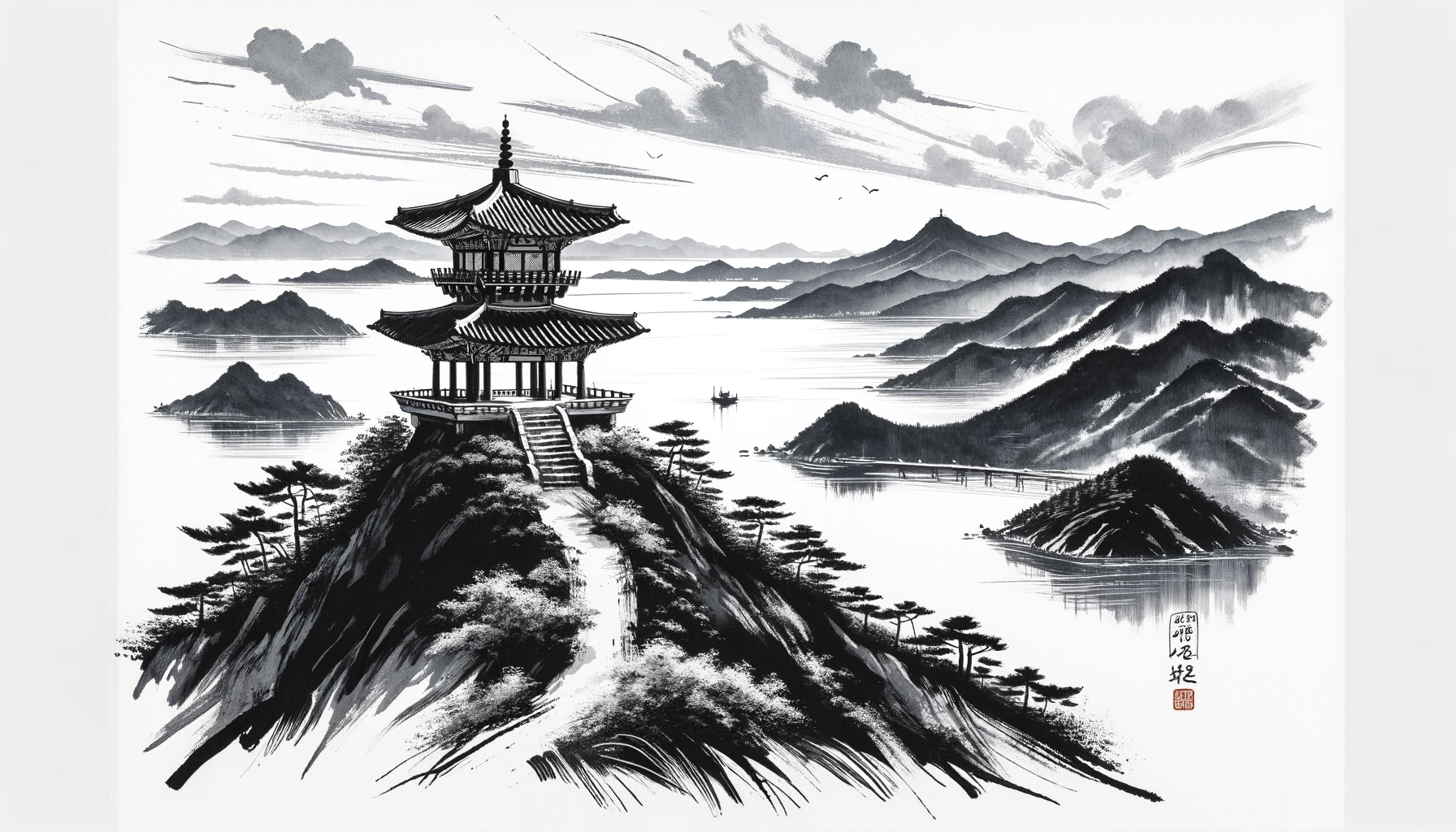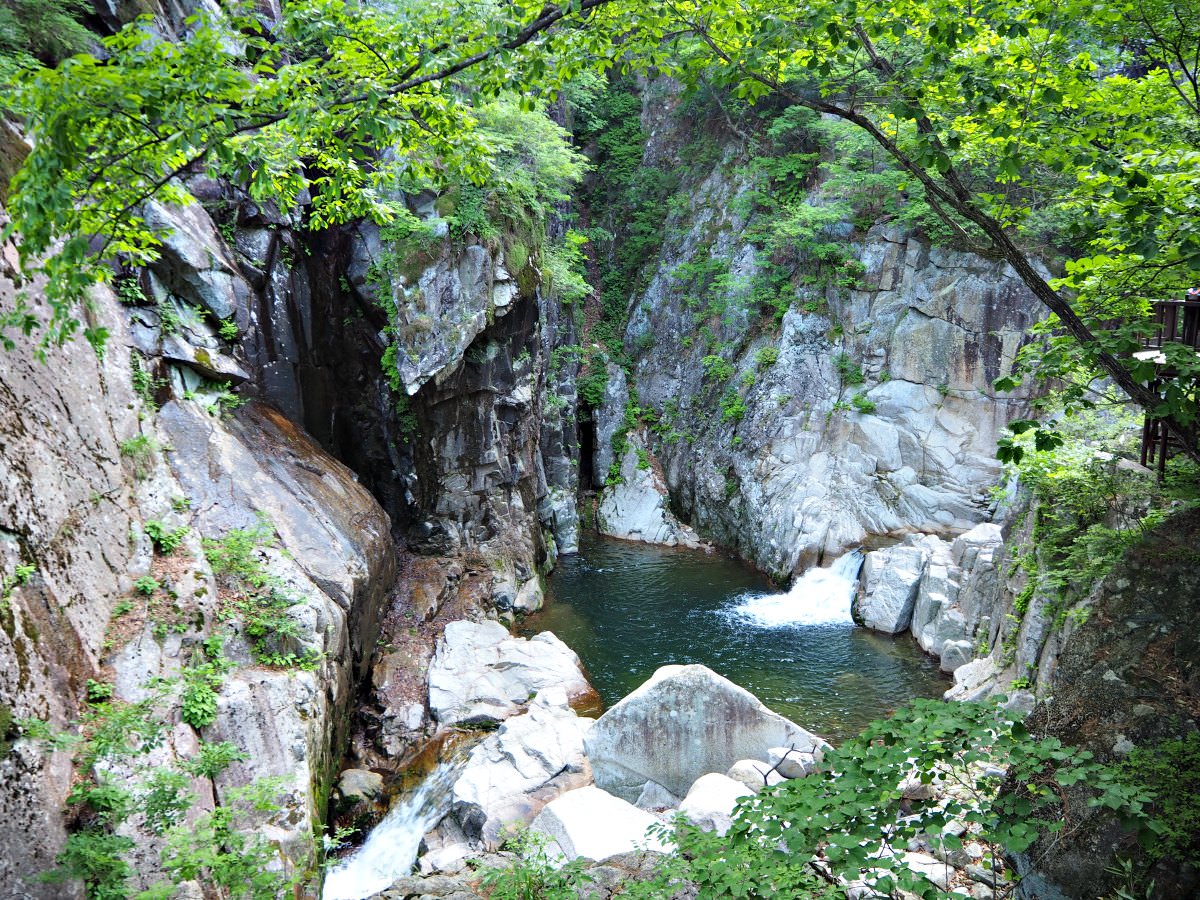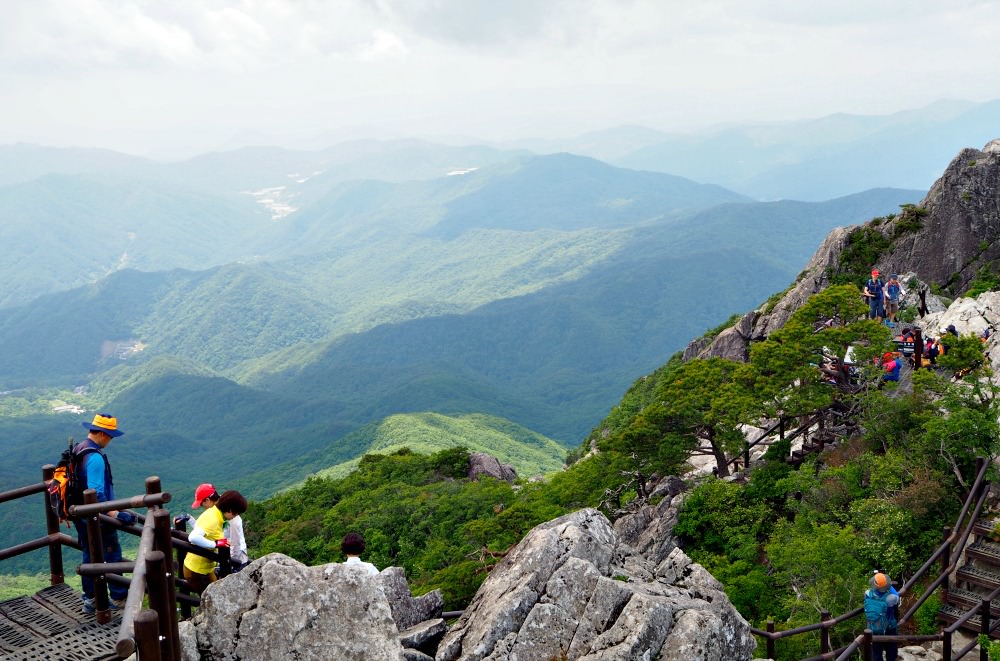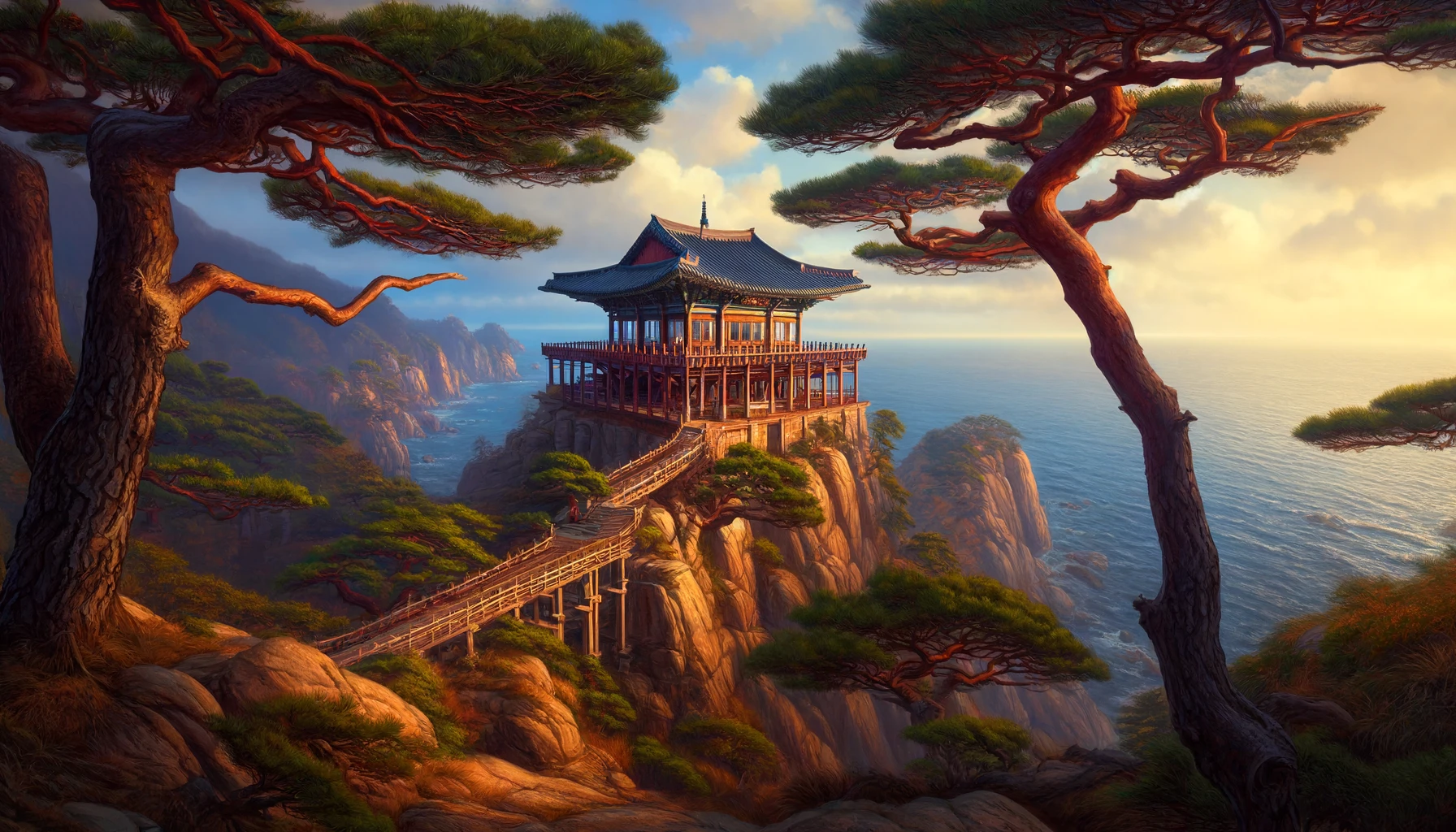Mangyangjeong Pavilion
In Uljin County
 The image of the Mangyangjeong Pavilion in Uljin County is reimagined as a traditional black ink and brush painting, capturing the essence and serenity of the scene with the minimalist beauty characteristic of East Asian ink wash painting.
The image of the Mangyangjeong Pavilion in Uljin County is reimagined as a traditional black ink and brush painting, capturing the essence and serenity of the scene with the minimalist beauty characteristic of East Asian ink wash painting.Mangyangjeong Pavilion in Uljin
Located in the picturesque Sanpo-ri village of Gyeongsangbuk-do, Mangyangjeong is an ancient pavilion dating back to the Joseon Dynasty.
This historic site is a must-visit for history buffs, architecture enthusiasts, and nature lovers alike.
With its stunning scenery and rich cultural heritage, Mangyangjeong is a testament to Korea's glorious past and a symbol of its enduring legacy.
The pavilion is perched atop the summit of a mountain, overlooking the picturesque Sanpo-ri in Geunnam-myeon, Uljin-gun.
Its location on the hillside facing the East Sea offers breathtaking ocean views, and to the west lies the renowned tourist destination, Seongryugul.
The charming Mangyang Beach stretches out below the pavilion, adding to the scenic beauty of the place.
The tranquil atmosphere and stunning surroundings make it an ideal spot for nature lovers and anyone seeking a peaceful getaway.
Changes & Reconstruction
Mangyangjeong, a pavilion initially established as one of the Eight Scenic Views of Gwandong, has an exciting history.
It was first erected on the coast of Mangyang-ri, Giseong-myeon, but later, in 1471, County Magistrate Chae Shin-bo relocated it to the foothills of Hyeonjongsan.
The pavilion underwent several reconstructions over the centuries. In 1517, it was destroyed by a storm, and the following year, Anlyeomsa's Yoon Hee-in, in collaboration with Kim Se-woo, the county magistrate of Uljin-gun, reconstructed it.
Then, in 1590, County Magistrate Go Gyeong-jo conducted further reconstruction, and in 1690, Sukjong sent a partial reconstruction request to Anwongun.
In 1854, there were discussions about relocating Mangyangjeong to Dunsan Coastal Peak, but the plan still needed to be realized.
However, in 1860, Uljin County Magistrate Lee Hee-ho and County Commissioner Im Hak-young finally relocated it to Dunsandong, Sanpo-ri, Geunnam-myeon.
Mangyangjeong has been a popular tourist destination despite being relocated several times due to its scenic beauty and rich history.
When visiting the pavilion, one can't help but marvel at the engineering feats that went into its construction and the cultural significance it has held for the local people over the centuries.
The county of Uljin and the Gyeongsangbuk-do Office of Education sponsored the project during its 1957 renovation. Kim Yong-sik, Jang Seong-eop, and Park Seung-gap generously donated timber.
Choi Jung-gil of Geunnam-myeon designed the pavilion, which was completed in 1958.
In 1979, restoration and purification work was carried out on the pavilion, and in 1995, the city and county provided financial support to replace its pillars and corroded parts.
This was necessary as the pavilion had tilted about 15 degrees, and the replacements helped to restore it to its original state.
As part of the Gyeongbuk Northern Region Cultural Tourism Development Project, the pavilion was completely dismantled in 2005 and rebuilt to its current state.
The pavilion is now a popular tourist attraction, with visitors from all over to admire its beauty and learn about its rich history.
Architecture
Mangyangjeong Pavilion in Uljin is a striking pavilion building with impressive architecture. It is rectangular, with three rooms at the front and two on the sides, all connected through corridors.
The design is based on the Dapo style, which features overlapping eaves and an octagonal-shaped roof.
The roof is exciting. It is covered with grey tiles that create an intricate pattern, with the corners of each tile raised to allow water to flow down easily. A decorative finial at the top adds elegance to the building.
Inside the pavilion is a well-maru, a central open space that allows air and light to flow freely throughout the building.
The well-maru is surrounded by a wooden floor that is slightly raised from the ground, and it serves as a gathering place for visitors who come to enjoy the breathtaking views.
The pavilion's front and rear sides are adorned with parapets that add to its overall aesthetic appeal. These parapets are intricately designed and feature a variety of patterns and shapes.
Similarly, the left and right sides of the building also have parapets that add to its overall grandeur.
Mangyangjeong is a beautiful example of traditional Korean architecture that has stood the test of time.
Its intricate design and attention to detail make it a popular destination for tourists who come to admire its beauty and learn about the rich cultural heritage of Korea.
Current Status
The Mangyangjeong plaque is a notable historical artifact written by the former county magistrate, Lee Tae-yeong, and is displayed prominently in the pavilion.
The pavilion is adorned with various literary works, including Songgang Jungcheol's "Gwandongbyeolkok," a partial reconstruction and poem titled "Gwandongje 1ru" by King Sukjong, and poems by King Jeongjo.
Additionally, you will find poems by Jeongchu, Sim Sugyeong, Im Hoe, Park Ran, Agye, Yi Sanhae, Songgang Jungcheol, and Kim Sisup from Maewoldang, all of which are beautifully displayed throughout the pavilion.
One of the most fascinating literary works is the "Mangyangjeong Move Building Beam Text," a rare manuscript describing the process of moving the Mangyangjeong pavilion from its original location to its current site.
This text provides a fascinating glimpse into the engineering techniques and methods of the time and is a testament to the ingenuity of the builders who created this magnificent structure.
The Mangyangjeong pavilion is a beautiful and historic site that you must visit if you are interested in Korean culture, history, and architecture.
[Source] Korea Institute of Korean Studies - Encyclopedia of Local Culture
- Home
- Gyeongsangbukdo Travels
- Mangyangjeong Pavilion In Uljin
Get Exciting Activities
Book one of our exciting activities today to experience the thrill of a lifetime! Take advantage of this opportunity and secure your spot in advance.
Hotel Map Guide
Find your affordable, accessible, and comfortable hotel in Seoul at Agoda.Com. See the hotel map below...
Hotel Booking Guide
Find affordable and amazing hotels on Agoda.com using the search box below. Book now to enjoy great discounts and save!







New! Comments
What do you think about this page? Leave me a comment in the box below.